草海桐Scaevola sericea
中文名(Chinese Name):草海桐
学名(Scientific Name):Scaevola sericea Vahl
英文名(English Common Name):beach naupaka
别名(Chinese Common Name):羊角树
异名(Synonym):Scaevola sericea Vahl Lobelia frutescens Mill. Scaevola billardieri Dieter. Scaevola chlorantha de Vriese Scaevola frutescens var. sericea (Vahl) Merr. Scaevola lambertiana de Vriese Scaevola latevaga Hance ex Walp Scaevola leschenaultii A. DC. Scaevola lobelia var. sericea (Vahl) Benth. Scaevola macrocalyx de Vriese Scaevola piliplena Miq. Scaevola plumerioides Nutt.
科属(Family & Genus):草海桐科(Goodeniaceae)草海桐属
形态特征(Description):直立或铺散灌木,有时枝上生根,或为小乔木,高可达7米,枝直径0.5-1厘米,中空通常无毛,但叶腋里密生一簇白色须毛。叶螺旋状排列,大部分集中于分枝顶端,颇象海桐花,无柄或具短柄,匙形至倒卵形,长10-22厘米,宽4-8厘米,基部楔形,顶端圆钝,平截或微凹,全缘,或边缘波状,无毛或背面有疏柔毛,稍稍肉质。聚伞花序腋生,长1.5-3厘米。苞片和小苞片小,腋间有一簇长须毛;花梗与花之间有关节;花萼无毛,筒部倒卵状,裂片条状披针形,长2.5毫米;花冠白色或淡黄色,长约2厘米,筒部细长,后方开裂至基部,外而于革. 内而密被白色长毛,檐部开展,裂片中间厚,披针形,中部以上每边有宽而膜质的翅,翅常内叠,边缘疏生缘毛;花药在花蕾中围着花柱上部,和集粉杯下部粘成一管,花开放后分离,药隔超出药室,顶端成片状。核果卵球状,白色而无毛或有柔毛,直径7-10毫米,有两条径向沟槽,将果分为两爿,每爿有4条棱,2室,每室有一颗种子。花果期4-12月。
分布(Distribution):产台湾、福建、广东、广西。生于海边,通常在开旷的海边砂地上或海岸峭壁上。日本、东南亚、马达加斯加、大洋洲热带、密克罗尼西亚,以及夏威夷也有。
用途(Use):
引自中国植物志英文版FOC Vol. 19 Page 568, 569
Scaevola taccada (Gaertner) Roxburgh, Hort. Bengal. 15. 1814.
草海桐 cao hai tong| Goodeniaceae | Scaevola
Lobelia taccada Gaertner, Fruct. Sem. Pl. 1: 119. 1788; Scaevola frutescens Krause, nom. illeg. superfl.; S. koenigii Vahl; S. sericea Vahl.
Shrubs or small trees, to 7 m tall, erect or diffuse. Twigs 5-10 mm in diam., sometimes rooting, hollow, usually glabrous but axils with a tuft of dense white barbate trichomes. Leaves spirally arranged, mostly aggregated at apex of branches, sessile or shortly petiolate; leaf blade spatulate to obovate, 10-22 × 4-8 cm, slightly succulent, glabrous or abaxially sparsely villous, base cuneate, apex rounded, truncate, or emarginate. Cymes axillary; bracts and bracteoles small, with a tuft of barbate trichomes in axils. Pedicel with a joint at apex. Calyx glabrous; tube obovoid; lobes linear-lanceolate, ca. 2.5 mm. Corolla white to pale yellow or purple, ca. 2 cm; tube thinly tubular, posterior side divided to base, outside glabrous, inside densely white villous; limb patent; lobes lanceolate, thickened at center, each side with a wide membranous and induplicate wing above middle, margin sparsely ciliate. Anthers connivent into a tube with basal part of indusium, becoming free after anthesis; connective longer than cells, becoming lamellar at apex. Drupe white, ovoid-globose, 7-10 mm in diam., divided longitudinally by furrows into 2 parts each 4-ribbed, 2-locular; locules each with 1 seed. Fl. and fr. Apr-Dec. 2n = 16.
Open coastal sands or rocks; near sea level. Dongsha Qundao, SE Fujian, Guangdong, Guangxi, Hainan, Nansha Qundao, Taiwan, Xisha Qundao [India, Indonesia, S Japan, Malaysia, Myanmar, Papua New Guinea, Pakistan, Philippines, Sri Lanka, Thailand, Vietnam; E Africa, tropical Australia, Indian Ocean islands, Madagascar, Pacific islands].
Scaevola taccada is naturalized in some coastal areas of tropical and subtropical America. It likely occurs in coastal Cambodia and the SE coast of Bangladesh, although these potential distributions need to be confirmed. For a discussion of the nomenclatural problems concerning the Indo-Pacific species S. taccada and the Indo-Atlantic species S. plumieri (Linnaeus) Vahl see P. S. Green (Taxon 40: 118-122. 1991), C. Jeffrey (Kew Bull. 34: 537-545. 1980), and R. K. Shannon et al. (Taxon 46: 801-802. 1997). The Vienna Code, Art. 33.3 Ex. 8, explains why the new combination as S. taccada was validly published by Roxburgh in 1814 due to reference to the published illustration by Rheede (Hort. Malab. 4: t. 59. 1683) which was also cited by Gaertner in his 1788 publication.
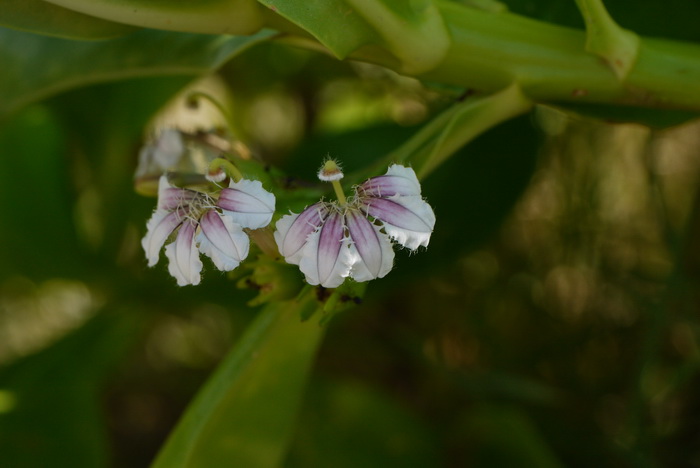
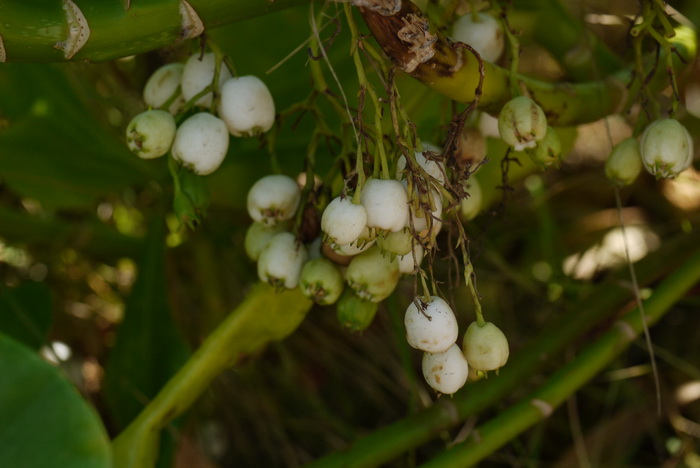
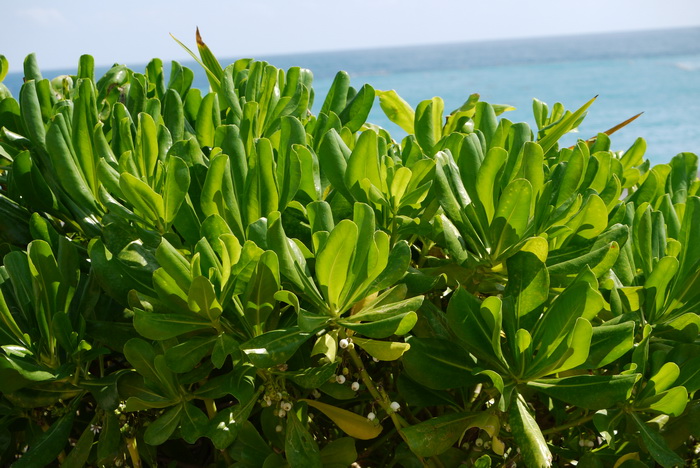
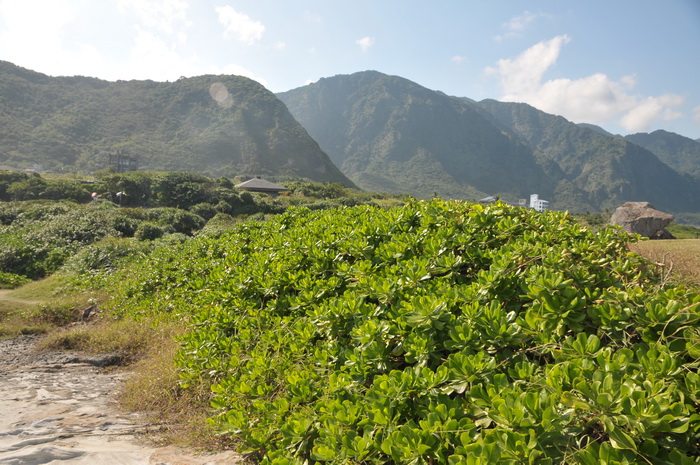
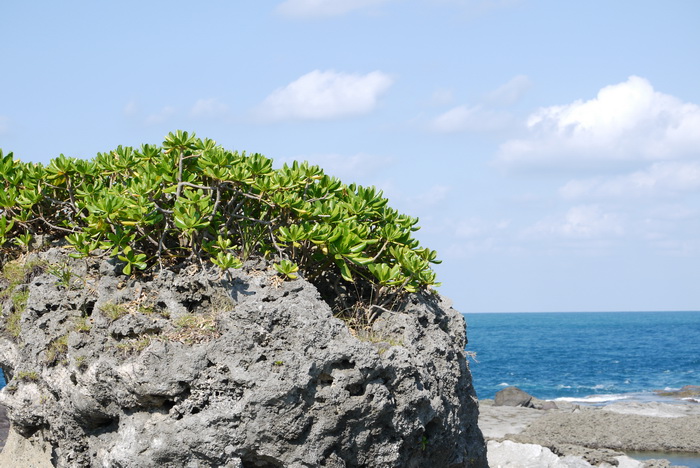 (责任编辑:徐晔春)
(责任编辑:徐晔春)
学名(Scientific Name):Scaevola sericea Vahl
英文名(English Common Name):beach naupaka
别名(Chinese Common Name):羊角树
异名(Synonym):Scaevola sericea Vahl Lobelia frutescens Mill. Scaevola billardieri Dieter. Scaevola chlorantha de Vriese Scaevola frutescens var. sericea (Vahl) Merr. Scaevola lambertiana de Vriese Scaevola latevaga Hance ex Walp Scaevola leschenaultii A. DC. Scaevola lobelia var. sericea (Vahl) Benth. Scaevola macrocalyx de Vriese Scaevola piliplena Miq. Scaevola plumerioides Nutt.
科属(Family & Genus):草海桐科(Goodeniaceae)草海桐属
形态特征(Description):直立或铺散灌木,有时枝上生根,或为小乔木,高可达7米,枝直径0.5-1厘米,中空通常无毛,但叶腋里密生一簇白色须毛。叶螺旋状排列,大部分集中于分枝顶端,颇象海桐花,无柄或具短柄,匙形至倒卵形,长10-22厘米,宽4-8厘米,基部楔形,顶端圆钝,平截或微凹,全缘,或边缘波状,无毛或背面有疏柔毛,稍稍肉质。聚伞花序腋生,长1.5-3厘米。苞片和小苞片小,腋间有一簇长须毛;花梗与花之间有关节;花萼无毛,筒部倒卵状,裂片条状披针形,长2.5毫米;花冠白色或淡黄色,长约2厘米,筒部细长,后方开裂至基部,外而于革. 内而密被白色长毛,檐部开展,裂片中间厚,披针形,中部以上每边有宽而膜质的翅,翅常内叠,边缘疏生缘毛;花药在花蕾中围着花柱上部,和集粉杯下部粘成一管,花开放后分离,药隔超出药室,顶端成片状。核果卵球状,白色而无毛或有柔毛,直径7-10毫米,有两条径向沟槽,将果分为两爿,每爿有4条棱,2室,每室有一颗种子。花果期4-12月。
分布(Distribution):产台湾、福建、广东、广西。生于海边,通常在开旷的海边砂地上或海岸峭壁上。日本、东南亚、马达加斯加、大洋洲热带、密克罗尼西亚,以及夏威夷也有。
用途(Use):
引自中国植物志英文版FOC Vol. 19 Page 568, 569
Scaevola taccada (Gaertner) Roxburgh, Hort. Bengal. 15. 1814.
草海桐 cao hai tong| Goodeniaceae | Scaevola
Lobelia taccada Gaertner, Fruct. Sem. Pl. 1: 119. 1788; Scaevola frutescens Krause, nom. illeg. superfl.; S. koenigii Vahl; S. sericea Vahl.
Shrubs or small trees, to 7 m tall, erect or diffuse. Twigs 5-10 mm in diam., sometimes rooting, hollow, usually glabrous but axils with a tuft of dense white barbate trichomes. Leaves spirally arranged, mostly aggregated at apex of branches, sessile or shortly petiolate; leaf blade spatulate to obovate, 10-22 × 4-8 cm, slightly succulent, glabrous or abaxially sparsely villous, base cuneate, apex rounded, truncate, or emarginate. Cymes axillary; bracts and bracteoles small, with a tuft of barbate trichomes in axils. Pedicel with a joint at apex. Calyx glabrous; tube obovoid; lobes linear-lanceolate, ca. 2.5 mm. Corolla white to pale yellow or purple, ca. 2 cm; tube thinly tubular, posterior side divided to base, outside glabrous, inside densely white villous; limb patent; lobes lanceolate, thickened at center, each side with a wide membranous and induplicate wing above middle, margin sparsely ciliate. Anthers connivent into a tube with basal part of indusium, becoming free after anthesis; connective longer than cells, becoming lamellar at apex. Drupe white, ovoid-globose, 7-10 mm in diam., divided longitudinally by furrows into 2 parts each 4-ribbed, 2-locular; locules each with 1 seed. Fl. and fr. Apr-Dec. 2n = 16.
Open coastal sands or rocks; near sea level. Dongsha Qundao, SE Fujian, Guangdong, Guangxi, Hainan, Nansha Qundao, Taiwan, Xisha Qundao [India, Indonesia, S Japan, Malaysia, Myanmar, Papua New Guinea, Pakistan, Philippines, Sri Lanka, Thailand, Vietnam; E Africa, tropical Australia, Indian Ocean islands, Madagascar, Pacific islands].
Scaevola taccada is naturalized in some coastal areas of tropical and subtropical America. It likely occurs in coastal Cambodia and the SE coast of Bangladesh, although these potential distributions need to be confirmed. For a discussion of the nomenclatural problems concerning the Indo-Pacific species S. taccada and the Indo-Atlantic species S. plumieri (Linnaeus) Vahl see P. S. Green (Taxon 40: 118-122. 1991), C. Jeffrey (Kew Bull. 34: 537-545. 1980), and R. K. Shannon et al. (Taxon 46: 801-802. 1997). The Vienna Code, Art. 33.3 Ex. 8, explains why the new combination as S. taccada was validly published by Roxburgh in 1814 due to reference to the published illustration by Rheede (Hort. Malab. 4: t. 59. 1683) which was also cited by Gaertner in his 1788 publication.
踩一下[0]

顶一下[1]